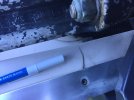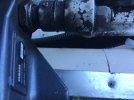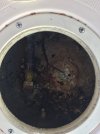Hello All - I'm in talks with a seller right now about purchasing their Grady While 1997 192 Tournament. The boat has a newer Yamaha 150hp 4 stroke and an almost new trailer. I had a surveyor consult on the boat, as it is not local. The most concerning items he brought up were the heavy smell of raw fuel in the fuel tank deck hole and two stress cracks on the transom on each side of the engine. He used his moister meter to see if the transom was overly wet and it came back slightly moist, but not too bad. He used his hammer to also check the transom and he said it sounded pretty solid actually. My questions here are, what would be needed to find out if the fuel tank or a fuel line hose are leaking and fix it? i.e. Deck removal, other? and (2) what are your thoughts on the stress cracks? If they are worrisome, would a transom plate provide a solution? Thanks All
Thinking of purchasing a 1997 192 Tournament (new engine and trailer)
- Thread starter Jon454
- Start date




